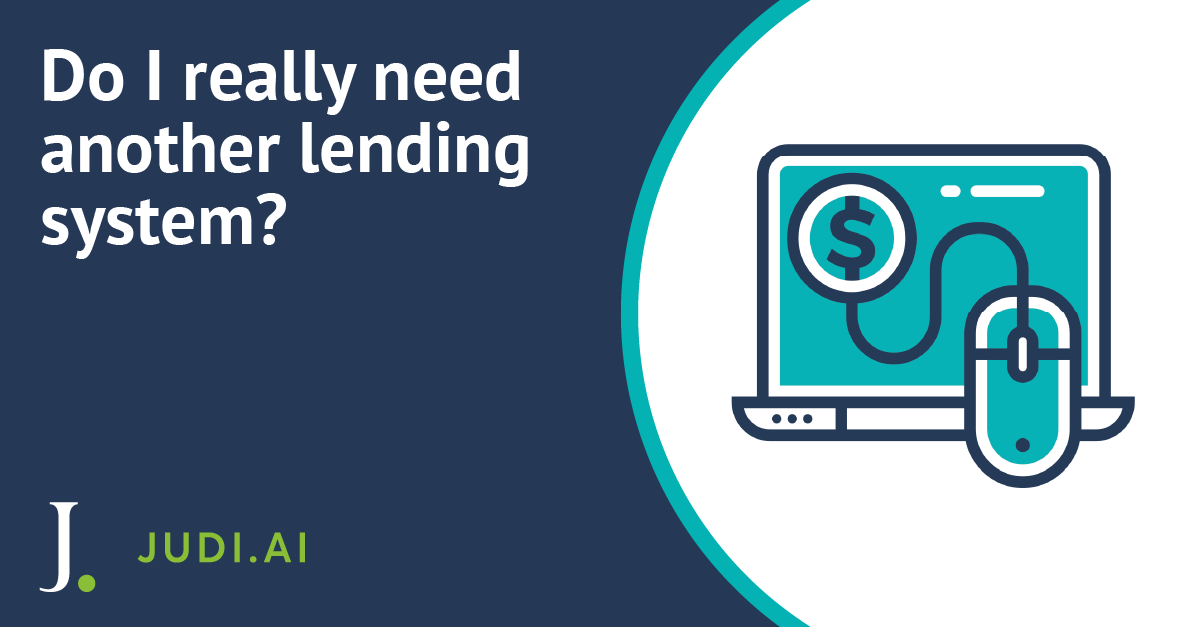One question we frequently get asked is whether a financial institution really needs another lending system specifically for small business. Can’t we just use our commercial LOS, or run this like a consumer loan? Or can JUDI just integrate with existing systems, so we can simplify operations, training and customer experience?
Yes – if it’s tailor made for SMBs
The short answer to the latter question is “Absolutely, yes, we can”. The longer answer is more nuanced, as this may not be the optimal strategy.
We believe the small business segment needs and deserves a process and systems that are purpose built to respect both its importance and uniqueness. Small business is big, important, underserved and very different than either consumer or commercial lending.
The big part: Something like 99% of businesses are considered small. There are 30+ million of them in the United States.
The important part: They employ approximately 50% of the global workforce. It’s a critical segment of the economy.
The underserved part: Many lenders de-prioritize this segment, and in most surveys of small business, they identify access to capital as one of – if not their top – challenge.
The different part: From a credit perspective, they are a non-homogenous hybrid of a consumer and a commercial enterprise, often with very little credit bureau coverage and opaque financial information.
The problem we hear all the time is that lenders insert small business either into existing consumer or commercial processes. However, to quote fintech pundit Alex Johnson:
“It’s a bit like the difference between painting a Toyota Sienna and painting a Rolls-Royce Wraith. The Toyota is going through a fully automated factory, where robots are painting each car in about 15 minutes. The Rolls-Royce is custom painted, with the color selected from 44,000+ different options (or having an entirely new color made from scratch), and if you want to add a pinstripe, you’ll need to get Mark Court, the only one of Rolls-Royce’s employees who is allowed to paint pinstripes, to do it by hand, a process that takes three hours per vehicle.”

Photo credit: https://www.press.rolls-roycemotorcars.com/
Small business lending isn’t a perfect fit in either world. The bespoke, highly manual acquisition, underwriting, and servicing processes from commercial lending just aren’t economical for a $50,000 small business loan. Someone buying a Toyota Sienna can’t afford to have Mark Court paint a pinstripe down the side.
Our (admittedly self-serving) point of view is that small business needs a purpose-built process and system. Even the most contemporary commercial lending systems will not simplify the applicant journey and collect the right information to streamline the process. Conversely, a consumer-oriented process anchored essentially by a consumer bureau score is not rigorous enough. We believe you should look inside the business and assess cash flow in real time.
A purpose-built system for small business thoughtfully threads a needle:
- It minimizes information collection to create an experience that is as close to a frictionless consumer experience as possible.
- It avoids a sometimes weeks long game of ping pong to collect (often stale dated) financials and tax returns.
- It has the “plumbing” required to ingest the “alternative” data required to efficiently process small business loans – in particular bank transaction data. This can be from multiple operating accounts, whether in-house at your institution or another.
- It instantly assesses current cash flow data from bank transactions, along with any available bureau information, enabling instant decisions on the “obvious” approvals and declines.
- This decisioning should be powered by a data science-driven credit model underpinned by performance data, rather than a simple scorecard.
- For the harder “grey” cases, it provides an advanced starting point and annotated file for an expedited review process that won’t kill the economics and customer experience.
- It provides a streamlined and simplified documentation process that is appropriate for the size, complexity and risk associated with the product segment.
We understand the desire to consolidate systems and reduce complexity. However, the reality is that the emergence of SaaS and the cloud has changed the game. There is an unprecedented opportunity to use best-of-breed solutions. To quote Forbes magazine:
“The stranglehold that monolithic software vendors once had on the IT industry has been seriously eroded, if not permanently disrupted by the proliferation of cloud-based SaaS applications … To borrow an Apple tagline, the assertion that “there’s an app for that” can be applied to almost every business activity, no matter how small, how narrow or how specialized. This has always been the great promise of SaaS: The ability to deliver narrow, targeted, innovative capabilities better, faster and cheaper than their monolithic competitors.”




